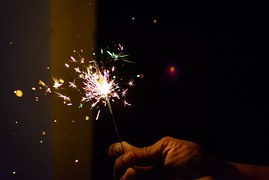Powerful Action to Prevent Further Sales of Firecrackers in Delhi

Introduction
As reported in The Times of India, “Delhi’s air pollution levels are among the worst in the world”. Indeed, a government agency recently detected a high concentration of ultrafine particulate matter (an extremely dangerous class of pollutants) in the atmosphere of Delhi, even in the cleaner, less populous regions of the city. It was primarily caused by the internal combustion in vehicle engines, and due to the untreated emissions from factories. And this isn’t the only pollutant—there exists a myriad of other, equally toxic particulate matter; the worst consequence, however, are the health effects this rampant pollution can have on those who are consistently exposed to it. These include severe lung problems, such as pneumonia, asthma, lung cancer and respiratory disorders. Certain particles can also penetrate the bloodstream, causing extreme damage to internal organs.
Dangers of Air Pollution
In fact, the pollution issue in Delhi has become so dangerous that it has been estimated by a study that numerous people die everyday in the capital city due to the problems spurred on by the toxic pollution levels. As said by the environment minister Prakash Javdekar, “An international study released recently has claimed that foul air is killing up to 80 people a day in Delhi. The numbers of premature deaths given in the study are based on the constructive estimates and extrapolations of data”. Other health impairments caused by this “foul air” are the compromising of the immune systems of the victims, as well as damage to the chromosomes and DNA of the people. Clearly, something serious has to be done to address this pressing issue.
How Diwali harm’s Delhi’s Children
However, Indian culture seems to only aggravate the problem—particularly the celebration of Diwali, one of most awaited festivals of the year. Although an incredibly religious and auspicious time, countless pollutants are also released, such as barium, sodium, cadmium and mercury; this increases the levels of suspended particulate matter by massive amounts. And despite the fact that almost everyone is ultimately affected, there is one group that is impacted the worst—the youngsters. The internal systems and organs of toddlers, children and adolescents are still developing, and since they are placed in such an unhealthy environment, they become all the more vulnerable to respiratory and pulmonary disorders. This is indeed an extremely grave issue—but this time, it is not the adults but the youngsters who have decided it is time to finally speak out.
Action Taken
On September 29, three toddlers knocked at the Supreme Court’s door requesting the judicial forces to act against the uncontrollable pollution in Delhi, particularly due to the oncoming festivities of firecrackers and sparklers. These three toddlers actually approached the Supreme Court with a petition to ban the sales of firecrackers this Diwali, since it is the younger segment of Delhi population that is injured the worst. Their parents filed the petition, part of which stated—“Over the last two years, Delhi has retained the unique distinction of being the most polluted city in the world. The levels of particulate matter are highest, and across the country, over 700,000 deaths occur annually due to air pollution related diseases. Studies show that citizens have 30 percent lower lung capacity than Europeans, and that the children are the worst affected, as their lungs have not yet fully developed and their vulnerable systems are made vulnerable”.
Conclusion
This initiative taken by the three toddlers (Arjun Gopal, Aarav Bhandari and Zoya Rao Bhasin) is one of the most moving and powerful actions ever taken to protest against the horrendously dangerous air pollution conditions in our nation’s capital city. Undoubtedly, given the fact that the air pollution in Delhi is utterly uncontrolled and has led to countless cases of lung problems, it is the young, developing children who are affected the most, and whose immune systems become affected due to the ambience they grow up in. So, all in all, hopefully this informative and passionate initiative will be able to truly alleviate the health problems shadowing the children and adults of Delhi, so that they can live in a city that looks after them, rather than one that weakens their most crucial parts—their health and their lives.
[Image Attribute: confused_me]



